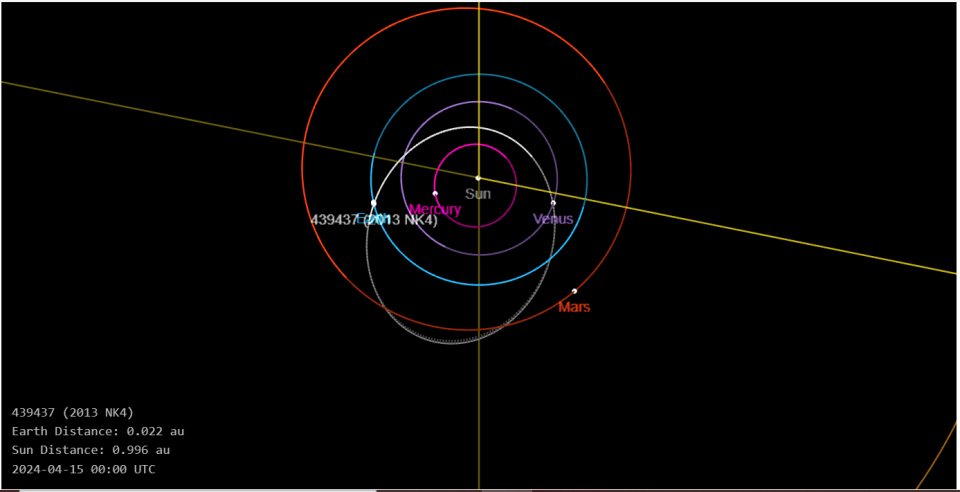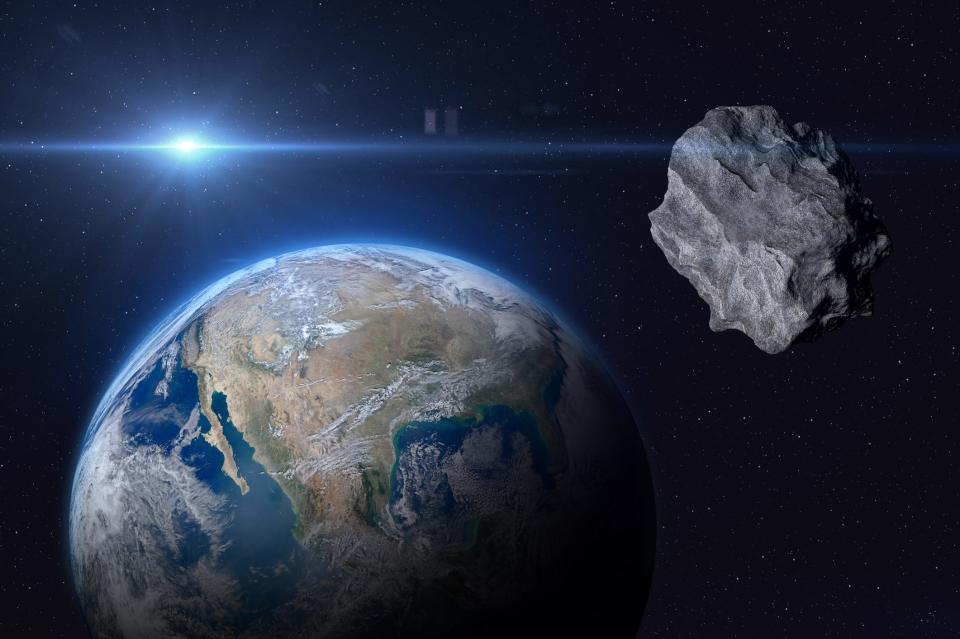Look up (with a telescope): 2,000-foot long asteroid to pass by earth Monday
A 2,000-foot asteroid is set to pass by earth Monday morning and if you don't catch it now, you'll have to wait more than a year to see it again.
But you are going to need a telescope to see the annual space phenomenon, astronomers say.
The asteroid named 2013 NK4 orbits the sun every 378 days, according to NASA.
The space rock has an elliptical orbit that takes it past the orbit of the planet Mars and in between the orbits of Venus and Mercury.
Sent Into Space: From Stanley cups to Samsung phones, this duo launches almost anything into near-orbit

What time will the large asteroid pass earth?
The asteroid is slated to safely pass by earth at 10:51 a.m. ET, NASA is reporting.
It is set to pass the earth again next year on April 23 at 7:12 a.m. ET.

Will I be able to see the asteroid pass by earth with my eyes?
No, you will need a telescope to see the celestial body, NASA says.
Although the closest approach for asteroid 2013 NK4 happens on Monday, due to its location in the sky, it’ll be easier to see the space rock when it's dark on April 16 and 17, according to EarthSky.org.
The asteroid, the outlet reported, is nearly twice as large as Apophis, "the so-called doomsday asteroid" set to pass closer than Earth’s artificial satellites in 2029.
Natalie Neysa Alund is a senior reporter for USA TODAY. Reach her at nalund@usatoday.com and follow her on X @nataliealund.
This article originally appeared on USA TODAY: 2,000-foot asteroid 2013 NK4 to pass safely by earth today

